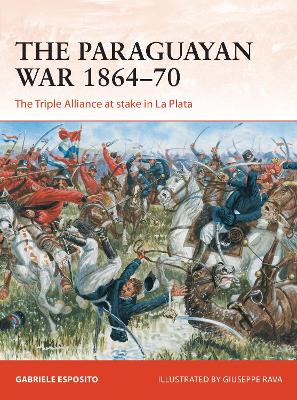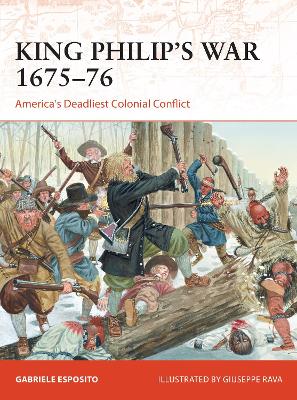Campaign
1 primary work • 2 total works
Book 342
The Paraguayan War, also known as the War of the Triple Alliance, was the largest and most important military conflict in the history of South America, after the Wars of Independence, and its only true 'continental' war. It involved four countries and lasted for more than five years, during which Paraguay fought alone against a powerful alliance formed by Brazil, Argentina and Uruguay. This conflict was remarkable in its huge scale and its terrible cost in lives, with the catastrophic human price paid by Paraguay amounting to more than 300,000 men, a loss of some 70% of the country's total population.
The war was a real revolution for the armies of South America, and the first truly modern conflict of the continent. When the war began in 1864, the armies were small, poorly trained and badly equipped semi-professional forces. However, by the time the war ended, most of them had adopted percussion rifles employing the Minie system and new weapons like breech-loading rifles and Gatling machine guns were being tested on the continent for the first time.
This title covers the whole span of the war, from the early days when the conflict primarily involved small columns of a few thousand men seeking each other out in rugged and sparsely inhabited territory, through to the later Napoleonic-style positional battles fought at points of strategic importance. It also explores the unique challenges presented by the humid, subtropical climate, including the devastating impact of disease on the troops.
The war was a real revolution for the armies of South America, and the first truly modern conflict of the continent. When the war began in 1864, the armies were small, poorly trained and badly equipped semi-professional forces. However, by the time the war ended, most of them had adopted percussion rifles employing the Minie system and new weapons like breech-loading rifles and Gatling machine guns were being tested on the continent for the first time.
This title covers the whole span of the war, from the early days when the conflict primarily involved small columns of a few thousand men seeking each other out in rugged and sparsely inhabited territory, through to the later Napoleonic-style positional battles fought at points of strategic importance. It also explores the unique challenges presented by the humid, subtropical climate, including the devastating impact of disease on the troops.
King Philip's War was the result of over 50 years' tension between the native inhabitants of New England and its colonial settlers as the two parties competed for land and resources. A coalition of Native American tribes fought against a force of over 1,000 men raised by the New England Confederation of Plymouth, Connecticut, New Haven and Massachusetts Bay, alongside their Indian allies the Mohegans and Mohawks. The resultant fighting in Rhode Island, Connecticut, Massachusetts, and later Maine and New Hampshire, resulted in the destruction of 12 towns, the death of between 600-800 colonists and 3,000 Indians, making it the deadliest war in the history of American colonization
Although war resulted in victory for the colonists, the scale of death and destruction led to significant economic hardship. This new study reveals the full story of this influential conflict as it raged across New England. Packed with maps, battle scenes, and bird's-eye-views, this is a comprehensive guide to the war which determined the future of colonial America.
Although war resulted in victory for the colonists, the scale of death and destruction led to significant economic hardship. This new study reveals the full story of this influential conflict as it raged across New England. Packed with maps, battle scenes, and bird's-eye-views, this is a comprehensive guide to the war which determined the future of colonial America.

